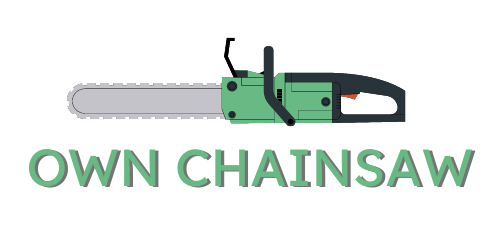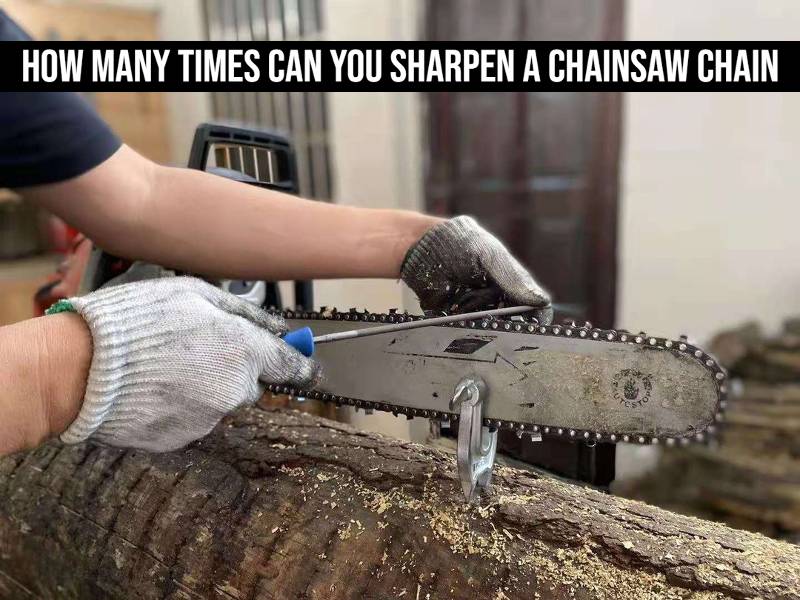
Are you fed up with buying a new chainsaw chain whenever it gets dull? If you’re like most people, you probably think that a chainsaw chain is only sharpened once or maybe twice. But, did you know that you can sharpen your chainsaw chain many times over?
Sharpening a chainsaw can be a tedious and time-consuming process. It can take hours of hard labor to get the chain back to its original sharpness. But if you’re willing to put in the effort, you can repeatedly sharpen your chainsaw chain.
How Many Times Can You Sharpen A Chainsaw Chain? Generally, a chainsaw chain can be sharpened 10-12 times before needing to be replaced. Also, It depends on the condition of the chain.
The number of times a chainsaw can be sharpened depends on how well it has been maintained. The more you sharpen it, the less effective it will become. So if you’re looking to save money and extend the life of your chainsaw, regular maintenance and sharpening are essential.
Can a chainsaw chain be sharpened more than once?
Yes, a chainsaw chain can be sharpened more than once. The chain will need to be sharpened when the cutting performance begins to decrease. Sharpening the chain requires a sharpening file and guide that are specific to the chain type.
A sharpened chainsaw produces cleaner cuts, is easier to handle, and requires less effort to cut.
Additionally, it can improve the accuracy of the cuts, resulting in more precise and uniform results. It also consumes less fuel when a chainsaw is sharper, saving you money. With a sharpened chainsaw, you have better control and efficiency, which results in a better-looking project.
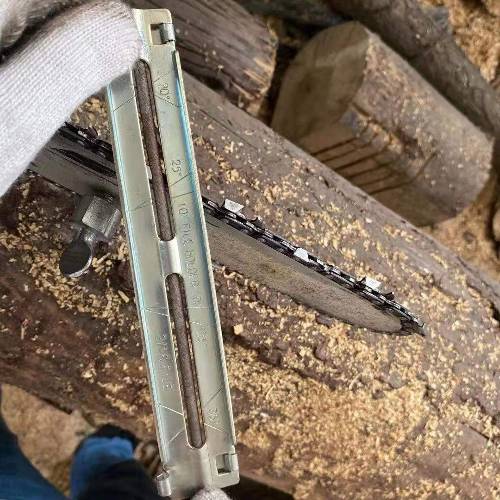
How to know that your chainsaw is dull and needs sharpening?
A dull chainsaw is not only inefficient, but it can also be dangerous if not properly maintained. So, how do you know when your chainsaw should be sharpened?
Here are a few signs that you should look out for. The first sign that your chainsaw is dull is the ease of cutting. If you are exerting more pressure and effort than usual to cut through a log, it may be a sign that the chain is dull and needs to be sharpened.
Sawdust is another warning indicator to watch out for. A sharp chainsaw should produce sawdust that is made up of tiny particles. The chain may need to be sharpened if the sawdust, on the other hand, is coarse and contains huge chips.
In addition to the sawdust, keep an eye out for smoke, which may be a sign that the chain is either overheating or not getting enough lubrication. If you do see smoke, you should stop using the chainsaw immediately, as not doing so can lead to serious damage.
A chainsaw may need to be polished if none of the above signs are present. Polishing is a process that involves removing imperfections from the surface of the chain, which can help to ensure that the chain remains sharp for longer.
Factors Affecting The Sharpness Frequency Of Chainsaws
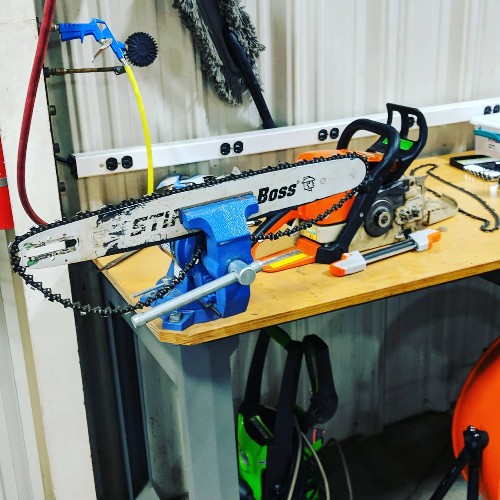
Chainsaws are a backyard essential for many homeowners. They are used for a variety of tasks, from pruning trees to cutting through thick logs.
With proper care, chainsaws can last for many years, but their performance can degrade over time. The sharpness of a chainsaw chain is one of the most important factors in its performance, and several factors can affect the chain’s sharpness.
1. Type of material being cut
When it comes to the sharpness of a chainsaw, a key factor to consider is the material to be cut. If you’re cutting softwood, then your chainsaw won’t need to be sharpened as frequently as if you were cutting hardwood or metal. Softwood is less dense and therefore it won’t take as much effort to cut.
Hardwood, on the other hand, is much denser. It requires more effort to cut and will wear down the blade of the chainsaw much faster. Metals are even denser and more difficult to cut, so expect to sharpen the chainsaw every time you use it.
Chainsaws should be made of the right type of material. Depending on what you’re cutting, you may need to sharpen the blade more or less frequently. In general, softwood requires less frequent sharpening, while hardwoods and metals require more frequent sharpening.
2. Chainsaw Sharpeness mistakes
Sharpening a chainsaw chain is a delicate task that requires experience and keen eyesight. The key to success is to sharpen the chain with precision to maintain its condition and extend its life. However, if not done correctly, costly mistakes can be made.
The most common mistake is that the chain is sharpened too quickly, resulting in an excessive metal loss. This can weaken the chain and make it more prone to breakage. Another mistake is sharpening the chain at the wrong angle, which can cause it to cut unevenly.
It is also important to check the depth gauge settings when sharpening the chain, as incorrect settings can cause the chain to cut too deeply, resulting in reduced performance. Last but not least, sharpen the chain evenly and avoid sharpening one side more than the other.
3. Right time of Sharpening
To keep your chainsaw as sharp as possible, timing is crucial when sharpening it. A sharp chainsaw is essential for smooth and efficient cutting, and it helps protect against injury. Knowing when to sharpen the chain is a key part of proper chainsaw maintenance.
The best time to sharpen a chainsaw is when the cutting performance of the blade starts to decline. If you’re using your chainsaw often, it’s best to sharpen the chain every time you refuel it.
This ensures that the chain remains sharp enough to function efficiently without needing frequent sharpening. To get the best results, use a chainsaw sharpener to ensure the teeth are sharpened to the correct angle.
4. Maintenance
While evaluating a chainsaw chain’s sharpness, maintenance is crucial. When a chainsaw chain is not properly looked after, it can become dull and less effective. Poor maintenance practices can cause the chain to become dull quickly, leading to inefficient and potentially dangerous cutting.
One of the most common causes of a dull chainsaw chain is inappropriate storage. If the chain is not stored in a dry, clean location, it can rust and become dull.
Moisture and rain can quickly break down the metal of the chain, leading to its dullness. Therefore, it is important to make sure the chainsaw chain is stored in a secure place and away from moisture.
Rain and moist weather can also dull chains. When the metal is wet, it corrodes and can become dull quickly. Therefore, it is important to take extra care when using a chainsaw during rainy or moist weather.
How to sharpen a chainsaw?
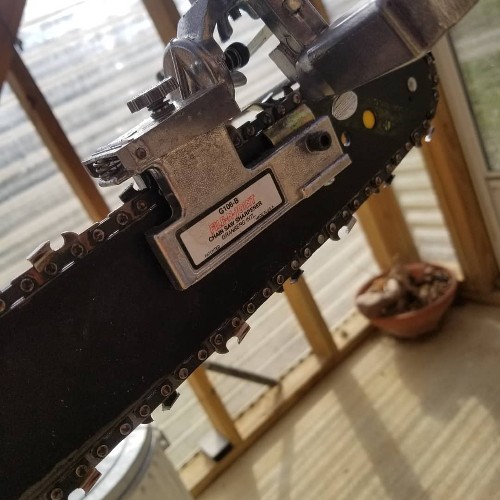
Sharpening a chainsaw can seem like a daunting task, but it is quite simple once you understand the process. A sharp chainsaw can make your work easier and cut faster, so it’s worth the effort to learn how to do it. Here are eight steps to help you sharpen a chainsaw like a pro.
Step 1 – Clean the Chainsaw Chain
Before you begin sharpening your chainsaw, it’s important to clean the chain. Start by brushing off any dirt, sawdust, and wood chips that may be stuck to the chain. This will help to ensure that your sharpening efforts are effective.
Step 2 – Set the Chain Tension
Once the chain is clean, you’ll need to set its tension. This is done by loosening the nuts on the side of the chainsaw and then tightening them back up to the correct tension. The correct tension should allow the chain to move easily and freely when you operate the chainsaw.
Step 3 – Stabilize the Chainsaw
You must stabilize the chainsaw after the chain has been tensioned to the proper level. The chainsaw can be fixed to a workbench or other sturdy surface to accomplish this. As you work, make sure the chainsaw is firmly fastened and won’t move.
Step 4 – Begin Sharpening at the Shortest Cutter
Sharpening can start when the chainsaw has been stabilized. Work your way up to the longest chain cutter starting with the shortest. Ensure that all of the cutters are being used at the same angle.
Step 5 – Stroke the Teeth at an Angle
Before you sharpen each chain cutter, you’ll need to stroke it at an angle. For assistance in calculating the correct angle, consult a chart regarding chainsaw sharpening angles. Keep the angle consistent as you move from one chain cutter to the next.
Step 6 – Sharpen the Other Side of the Chain
Once you’ve sharpened one side of the chain, you’ll need to turn it over and sharpen the other side. Make sure to use the same angle as before and to stroke at a consistent rate.
Step 7 – Check Your Depth Gauges
After you’ve sharpened both sides of the chain, you’ll need to check the depth gauges. These gauges should be set at the same height for all of the cutters. If you find that some of the cutters are lower than the others, you’ll need to adjust their depth gauges.
Step 8 – Final Check and Lubrication
You can perform a final inspection on the chain after you have examined and adjusted the depth gauges. Verify that the teeth are all equally tall and that they are all sharp. Before reattaching the chain to the chainsaw, you must lastly oil it.
Chainsaw sharpening videos can also be found on YouTube.
How Long Should A Chainsaw Chain Last Between Sharpenings?
Generally, it is recommended to sharpen the chain every 3-4 hours of active wood-cutting. This may mean that for someone who only uses the chainsaw occasionally, it could go a year or longer without needing to be sharpened.
Someone who is using the chainsaw more frequently, such as a professional tree trimmer or logger, may need to sharpen their chain more regularly. To ensure the chainsaw is working properly, it is important to check the chain’s sharpness frequently, even if it is not actively being used.
Closing Thoughts!
A chainsaw chain can be sharpened many times depending on its quality and the skill of the person sharpening it.
Usually, a chainsaw chain can be sharpened up to 10 times before it needs to be replaced. Keeping the chain sharp is essential for optimal performance and safety. If the chain is not sharpened regularly, it will become dull, making it very difficult to cut and increasing the risk of kickback.
The user will also have to exert more effort to cut with a dull chain, resulting in fatigue and injury. Therefore, it is important to sharpen your chain regularly to keep it in top condition.
FAQs
What should I do if the cutting edges of my chainsaw chain are too dull to sharpen?
If the chainsaw chain’s cutting edges are too dull for sharpening, it is time to replace the chain. Sharpening a dull chain can be dangerous and ineffective. It is important to remember to keep your chainsaw chain sharp and properly maintained to get the best performance and the longest life out of it.
What tools are needed to sharpen a chainsaw chain?
To sharpen a chainsaw chain, you will need a round, flat file, a depth gauge tool, and a depth gauge guide. The round, flat file is used to sharpen the cutters and the depth gauge tool and guide are used to ensure that the cutters are cut to the correct depth.
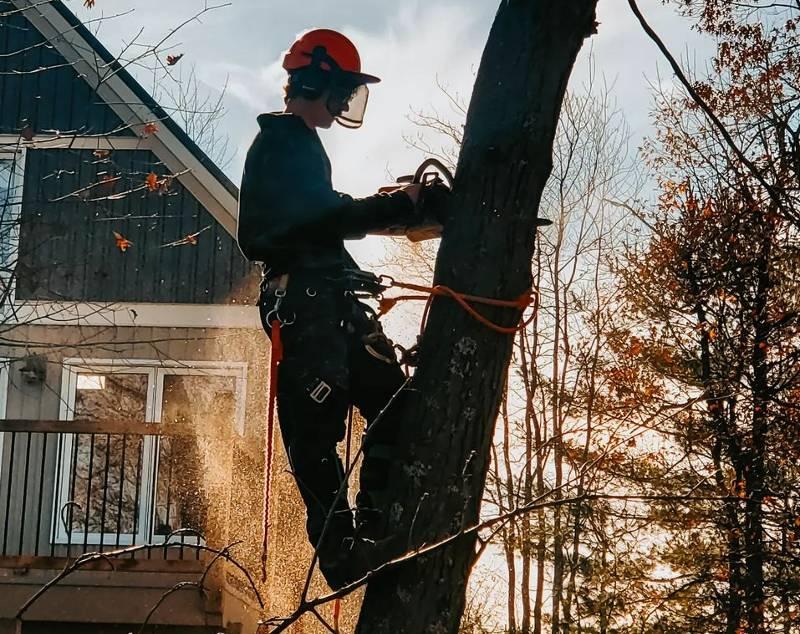
I am Senior Editor and CEO and I have been a chainsaw enthusiast for over 12 years. As a passionate chainsaw enthusiast, I have got a wealth of knowledge and experience with chainsaws, and I am constantly striving to expand my expertise and knowledge. Read More!
